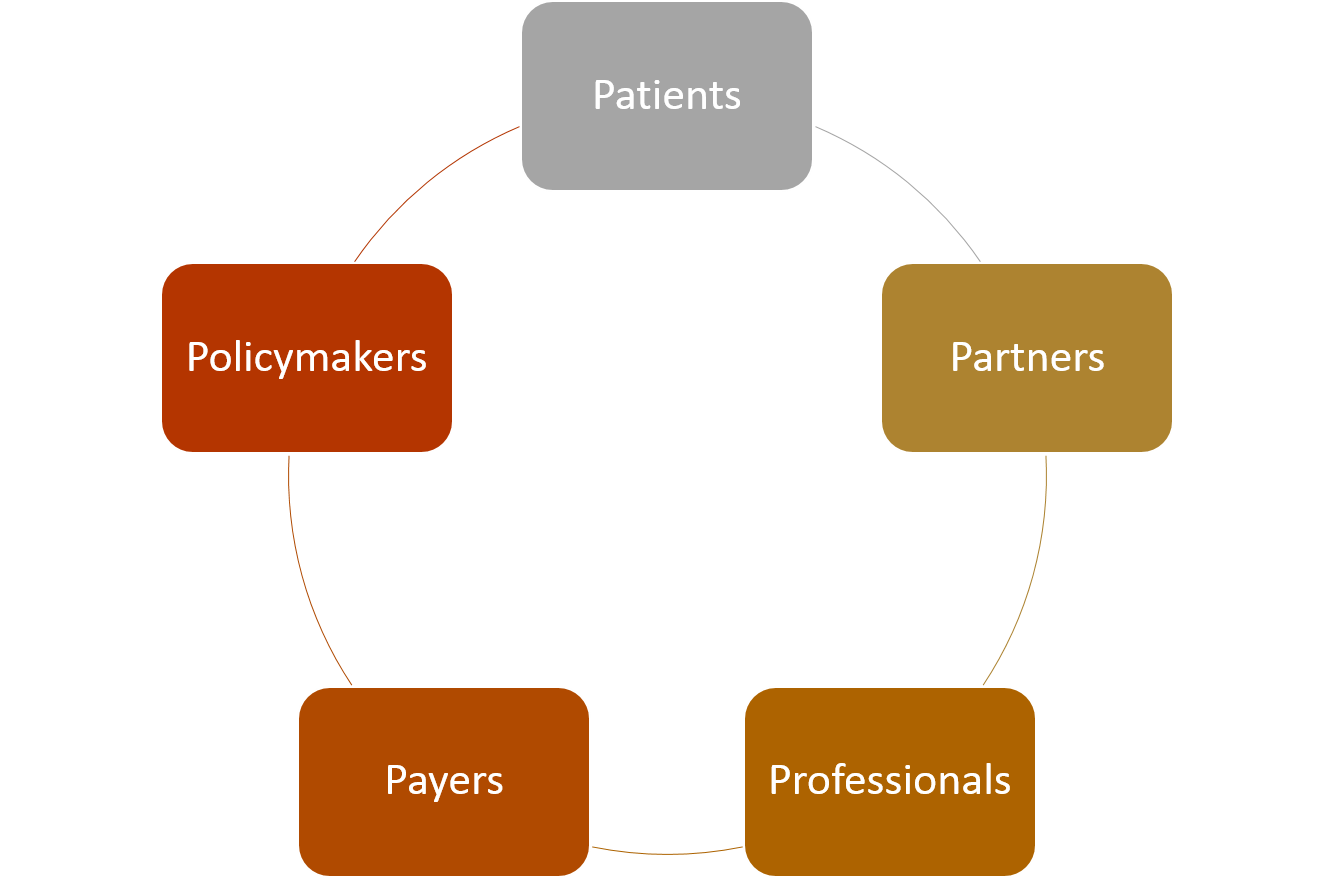
27 Jun The Hungarian Situation: National Stakeholder Workshop, Integrated Care Program Selection, and Relevant Indicators
By: Marcell Csanádi and Kata Csetneki from Syreon Research Institute, Hungary
Since the last SELFIE blog in February, written by our German colleague Verena Struckmann from Technical University Berlin, each SELFIE project member started to engage in a direct dialogue with national stakeholders. Patients, Partners (or other informal caregivers), Professionals, Payers and Policy makers had the opportunity to reflect on our strategies, to contribute valuable feedback and to network with SELFIE researchers and partners from other sectors.
Each consortium partner needs to organize and host country-specific workshops with national stakeholders three times during the SELFIE project, at the start, mid-term and at the end. Main purposes of the first workshops were to include stakeholders in the identification, description and design of the evaluation of integrated chronic care (ICC) programs for multi-morbidity.
We organized the first Hungarian SELFIE workshop in two separate sessions: in Pécs on 11th February 2016, and in Budapest on 25th February 2016. The rationale for this approach was to invite a sufficient number of stakeholders from different regions. Moreover, the experience accumulated in the first session was utilized to fine-tune the methodology of the second session. At the workshop meetings, a draft framework of multi-morbidity ICC models was presented and discussed. We further discussed promising Hungarian ICC programs for multi-morbidity that could be candidates for further evaluation in SELFIE. In addition we had a brainstorming session to receive ideas on relevant indicators for the planned empirical evaluation of the ICC programs for multi-morbidity, from the Hungarian perspective. Stakeholders were enthusiastic and actively participated, and raised many useful ideas and recommendations.
Concerning the conceptual framework presented, several issues were raised which should be considered when implementing or evaluating ICC models in Hungary. The most important features to deal with in Hungary were the potentially distorting effects of informal payments by patients to physicians, competition of physicians instead of cooperation, unreliable healthcare claims data, lack of human resources, cultural heterogeneity of patients, limited enforcement of clinical guidelines, fragmented IT systems and lack of education for patient pathway managers. The holistic approach was considered to be highly relevant to overcome the concerns.
Concerning the selection of promising integrated care programs for multi-morbidity in Hungary, a long-list of six Hungarian initiatives was discussed. One program clearly met the criteria for the selection of programs for further evaluation in SELFIE, namely OncoNetwork at Kaposvár. In this regional initiative an integrated oncology care model was developed to improve clinical outcomes and organizational efficiency by reducing time to diagnosis, time to start of therapy and unnecessary utilization of healthcare resources. For this purpose a targeted IT solution has been developed to support individual patient path management.
During the workshop at Pécs further candidates for evaluation in the SELFIE project were proposed. This eventually led to the selection of the Palliative Care Consulting Services at the University of Pécs Clinical Center. Hence, the Hungarian team of the SELFIE project selected two programs which include patients with multi-morbidity at the very end of the care continuum running from health promotion, diagnosis of a single disease, disease management of a single disease, coordination/case management of multiple diseases, palliative care/end of life care. Perhaps this illustrates that the Eastern European countries first focus on improving care for the most severe patients with multi-morbidity, as the Western European countries did before moving more to the front of the care continuum.
Concerning the indicators to measure in the empirical evaluation of such programs, stakeholders raised several ideas from which we prepared a consolidated list. For health outcomes, costs and patients experience 18, 24 and 15 potentially relevant indicators were proposed, respectively. In addition, further proposed indicators were raised which could not be clearly linked to the three main categories, for example: availability of clinical guidelines or medication adherence.
In June the final selection and the process of identification of most promising Hungarian ICC models will be presented at the annual Hungarian Health Economic Conference by János Pitter and the results of potential indicators will be disseminated on a poster presentation by Syreon researchers.
Participants from different partner organizations will be posting updates on our work via this blog regularly, you can either check this page to stay up to date, or sign up for the newsletter below to receive information via email. Please contact us if you have any questions, comments, or suggestions!



No Comments